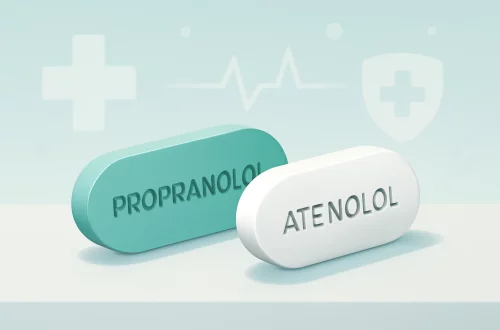-
Januvia vs Farxiga: A Comprehensive Comparison of Diabetes Medications
The prevalence of diabetes has become a pressing health concern globally, with millions of individuals affected by this chronic condition. As the medical community continues to seek effective treatments, numerous medications have emerged to help manage blood sugar levels and improve the overall quality of life for those living with diabetes. Among these medications, Januvia and Farxiga have gained significant attention for their unique properties and effectiveness in controlling diabetes. Understanding how these medications work, their benefits, and potential side effects can be crucial for patients and healthcare providers alike. Each medication operates through different mechanisms, targeting various aspects of diabetes management. As patients navigate their treatment options, it is…
-
Loratadine vs Xyzal: Which Allergy Medication Is Right for You?
Allergies are a common concern for many individuals, often leading to discomfort and disruption in daily activities. The body’s immune response to allergens can trigger various symptoms, such as sneezing, itching, and nasal congestion. To combat these symptoms, a wide range of antihistamines are available on the market. Two popular options are Loratadine and Xyzal, both of which are used to alleviate allergy-related symptoms. Despite sharing a common purpose, these medications differ in their active ingredients, mechanisms of action, and potential side effects. Understanding these differences can empower individuals to make informed decisions about their allergy management. In the realm of allergy relief, choosing the right medication can significantly impact…
-
Trazodone vs Mirtazapine: Which Antidepressant Is Right for You?
Trazodone and Mirtazapine are two medications commonly prescribed for the treatment of various mental health conditions, primarily depression and anxiety. Both of these medications have gained recognition for their effectiveness, yet they operate through distinct mechanisms in the brain and have different profiles of side effects. Understanding the nuances of each medication can be crucial for patients and healthcare providers alike when making informed treatment choices. Trazodone is classified as a serotonin antagonist and reuptake inhibitor (SARI), while Mirtazapine falls under the category of noradrenergic and specific serotonergic antidepressants (NaSSAs). Their differing modes of action influence not only their efficacy but also the types of side effects and interactions they…
-
Trazodone or Mirtazapine: Which Antidepressant is Right for You?
Trazodone and mirtazapine are two medications commonly prescribed for the treatment of depression and anxiety disorders. As mental health awareness has grown, so has the need for effective treatments. These medications belong to different classes of antidepressants and have unique mechanisms of action, side effects, and therapeutic uses. Understanding the differences and similarities between trazodone and mirtazapine can help individuals make informed decisions about their treatment options. Both medications are generally well-tolerated, but their efficacy can vary from person to person. Some patients may respond better to one medication than the other, and factors such as individual health history, other medications being taken, and potential interactions can influence this choice.…
-
Viagra vs Tadalafil: Which ED Treatment is Right for You?
Erectile dysfunction (ED) is a common condition that affects millions of men worldwide. It can significantly impact relationships and self-esteem, leading many to seek effective solutions. Among the various treatments available, two of the most well-known medications are Viagra and Tadalafil. Both are designed to help men achieve and maintain an erection by increasing blood flow to the penis, but they are not identical. Understanding the differences between these two medications is crucial for anyone considering treatment for ED. Factors such as onset time, duration of effects, side effects, and potential interactions with other medications can influence a man’s choice. With a plethora of information available, it can be overwhelming…
-
Farxiga vs Tradjenta: A Comprehensive Comparison for Diabetes Management
In the world of diabetes management, the choice of medication can significantly impact a patient’s quality of life. With the rise of diabetes prevalence globally, various medications have emerged to help individuals manage their blood sugar levels effectively. Among these, Farxiga and Tradjenta are two commonly prescribed medications that serve distinct purposes in diabetes treatment. Understanding the differences and similarities between these two drugs can empower patients and healthcare providers to make informed decisions tailored to individual needs. Farxiga, known generically as dapagliflozin, is part of a class of medications called SGLT2 inhibitors. It works by preventing the reabsorption of glucose in the kidneys, allowing excess sugar to be excreted…
-
Eliquis vs Xarelto Which Anticoagulant is Right for You
Anticoagulants play a crucial role in modern medicine, especially for patients at risk of developing blood clots. Two of the most commonly prescribed anticoagulants are Eliquis (apixaban) and Xarelto (rivaroxaban). Both medications belong to a class of drugs known as direct oral anticoagulants (DOACs) and are used to reduce the risk of stroke and blood clots in patients with conditions such as atrial fibrillation or venous thromboembolism. The choice between Eliquis and Xarelto can be a significant decision for both patients and healthcare providers. Factors such as efficacy, safety profiles, dosing regimens, and potential drug interactions must be considered. Each medication has its unique characteristics that can influence treatment decisions…
-
Azithromycin vs Erythromycin: Key Differences and Uses Explained
Azithromycin and erythromycin are two widely used antibiotics that belong to the macrolide class of medications. They are both effective in treating various bacterial infections by inhibiting bacterial protein synthesis, which ultimately leads to the death of the bacteria. Both drugs are commonly prescribed for respiratory tract infections, skin infections, and certain sexually transmitted infections, among others. Despite their similarities, there are significant differences between the two that can influence a physician’s choice of treatment. In clinical practice, understanding these differences is essential for selecting the appropriate antibiotic that will effectively target the infection while minimizing potential side effects. Factors such as bacterial resistance, patient tolerance, and specific infection types…
-
Naltrexone vs Contrave: Understanding the Key Differences and Benefits
When it comes to weight management and addiction treatment, Naltrexone and Contrave are two terms that often come up in discussions among healthcare professionals and patients alike. As the prevalence of obesity and substance use disorders continues to rise, understanding the medications available for these conditions has never been more critical. Both Naltrexone and Contrave have distinct mechanisms of action, indications, and side effect profiles, making them suitable for different patient populations. This article aims to demystify these medications, shedding light on their uses, benefits, and potential drawbacks. Naltrexone is primarily known as an opioid receptor antagonist, often prescribed to help individuals overcome addiction to opioids or alcohol. By blocking…
-
Xanax vs Librium: Understanding the Differences and Uses
Xanax and Librium are two medications that fall under the category of anxiolytics, commonly prescribed to manage anxiety and related disorders. While both drugs serve a similar purpose, they possess distinct characteristics, mechanisms of action, and potential side effects. Understanding these differences can be crucial for patients and healthcare providers alike. The increasing prevalence of anxiety disorders in today’s fast-paced world has heightened the demand for effective treatment options. As such, a thorough examination of anxiety medications like Xanax and Librium is essential for informed decision-making. When discussing anxiolytics, it’s important to recognize that they interact with the brain’s neurotransmitters, particularly gamma-aminobutyric acid (GABA). This interaction can lead to a…







































